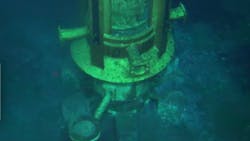Second-phase JIP targets improved wellhead fatigue analysis
Offshore staff
NORWICH, UK — 2H Offshore Engineering has opened the second phase of its Measurement-based Wellhead Fatigue joint industry project (JIP), with the support of seven offshore operators.
The goals are to improve riser, wellhead and conductor fatigue assessments estimates and make drilling operations more efficient and reliable.
In Phase 1, the company worked with nine operators to compile and analyze field measurements from 10 drilling campaigns in the Gulf of Mexico and the North Sea. Data covered various environments, water depths, soil characteristics, riser and wellhead configurations, and vessel types.
Results suggested that industry assumptions for wave and vortex-induced vibration (VIV) fatigue assessments may be conservative and that remaining fatigue life tends to be higher than determined by typical design methods.
Also, a more accurate prediction of remaining fatigue life could avoid the need for expensive mitigation measures, unnecessary upgrades and downtime during severe events.
In the current Phase 2, the team will use the field data analyzed in Phase 1 to characterize uncertainties identified in the riser, wellhead and conductor fatigue analysis. Findings should further improve the accuracy of future wellhead fatigue assessments, 2H said, and provide an industry consensus on design methodology.
Bulent Mercan, 2H project manager, said, "Wellhead and conductor fatigue challenges have become more prevalent in recent years due to the use of newer generation vessels with larger blowout preventers and longer drilling operations being conducted in more harsh environments…A reliable set of analytical parameters leveraging diverse field measurements will lead to improved accuracy and more efficient drilling operations. There are a lot of learnings from the field measurements. We plan to further utilize the datasets to address some uncertainties in the analysis. The findings will be used in the near term to increase the accuracy of wave and VIV fatigue assessments and will eventually inform a revision of industry riser design codes.”
05.23.2023
